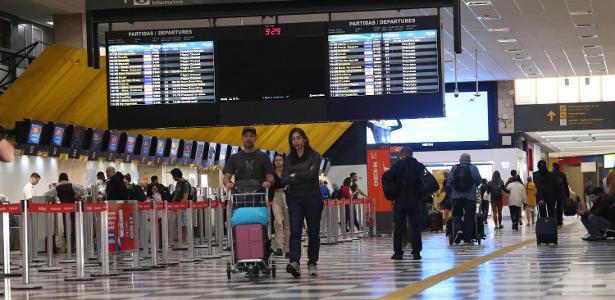Why did the company pay so much more than the minimum for Congonhas, even without a competitor? – 08/20/2022
4 min read
Last Thursday (August 18), A Seventh round of airport concessions to the private sector in Brazil. 15 airports grouped into 3 regional blocks were auctioned. In particular, attention was drawn to the block that includes 10 airports in the states of São Paulo, Mato Grosso do Sul, Pará and Minas Gerais.
This is because this package included Congonhas Airport, the second largest airport in terms of passenger traffic in the country and possibly very profitable. Although there was no competition during the auction on this block, the premium (the difference between the price paid for the franchise and the minimum auction reference value) paid by the winning lot was 231.02%.
Obviously, there is always an argument in the media that the premium could be linked to a state error in valuing the auctioned assets. More specifically, the minimum bonus amount will be undervalued and the auction result will only represent this error. I have a different view in the case of the airport sector.
The interpretation of the premium is likely to be present in the hallmark of the approved auction form, which is divided into two stages (delivery of a sealed envelope and, subsequently, bidding in person), without information on the qualification who sent the proposal is initially announced.
The idea of this model is to create reasonable doubt in potential competing associations about who will be their most effective competitor in the event. The goal, ultimately, is to induce risk-averse groups (those who “fear” not gaining the right to provide airport service) to raise their bids in the first stage.
To understand this issue, it is enough to put yourself in the shoes of an auction participant and understand the form described in the public notice. It states that, in the first stage, all interested parties must send their proposals to the National Civil Aviation Agency (Anac), by means of a sealed envelope. In this case, it happened on August 15th.
Anac, in turn, received all the offers, without informing the unions that had already made an offer for the franchise. Thus, no one knows, at this moment, who will really compete, let alone who will be able to participate in the second stage (out-of-the-box auction). That’s when things start to close.
This is because the public notice also states that only bidders whose bid satisfies, after determining the provisional result of opening envelopes, can share at least one of two conditions.
The first is that the consortium has submitted at least one of the airport group’s three largest bids. The second is that the value offered is equal to or greater than 90% of the value of the highest bid submitted.
In other words, the rule of ‘qualification’ for the second stage of the auction runs the risk that some unions will not qualify for this stage if they do not meet the conditions specified above. Thus, it may not be a good idea to present a very low value in the first stage (closed envelope), under pain of not qualifying for the second stage (amplifier).
Essentially, in the absence of knowledge about who is going to bid in the first stage and what values are being offered, a risk-averse bidder would prefer to raise his bid at the first moment to a value closer to the “reserve price” (the limit he would be willing to pay to operate the terminal target auction).
In this sense, the premium paid by the winning association, Aena Desarrollo Internacional, may be a reflection of the model described here. In other words, in an effort to avoid any risk of losing an asset it considers to be of great value, the consortium may prefer to raise its initial bid which has been placed in the sealed envelope and thus secure its participation in the second phase.
It should also be noted that this strategy adopted by Aena would have the additional advantage of the group to indicate, in a possible second stage of the auction (by loudspeaker), that the consortium entered the event “no-loss”, and that it would be willing to buy the fight by offering Very high bids.
In any case, regardless of Aena’s real motives, the fact is that the model that was used is based on international best practices and on the economic literature on “auction theory”. Its objective is clearly to increase competition for the auctioned assets and to maximize the revenue collected by the state.
Therefore, it does not seem reasonable to me to attribute the premium obtained in the Congonhas Block to pricing errors by the state or even by Aena leaders (as I have read elsewhere). On the contrary, it may be time for other sectors to consider and learn from the approved auction process in the national airport sector.

“Entrepreneur. Music enthusiast. Lifelong communicator. General coffee aficionado. Internet scholar.”







